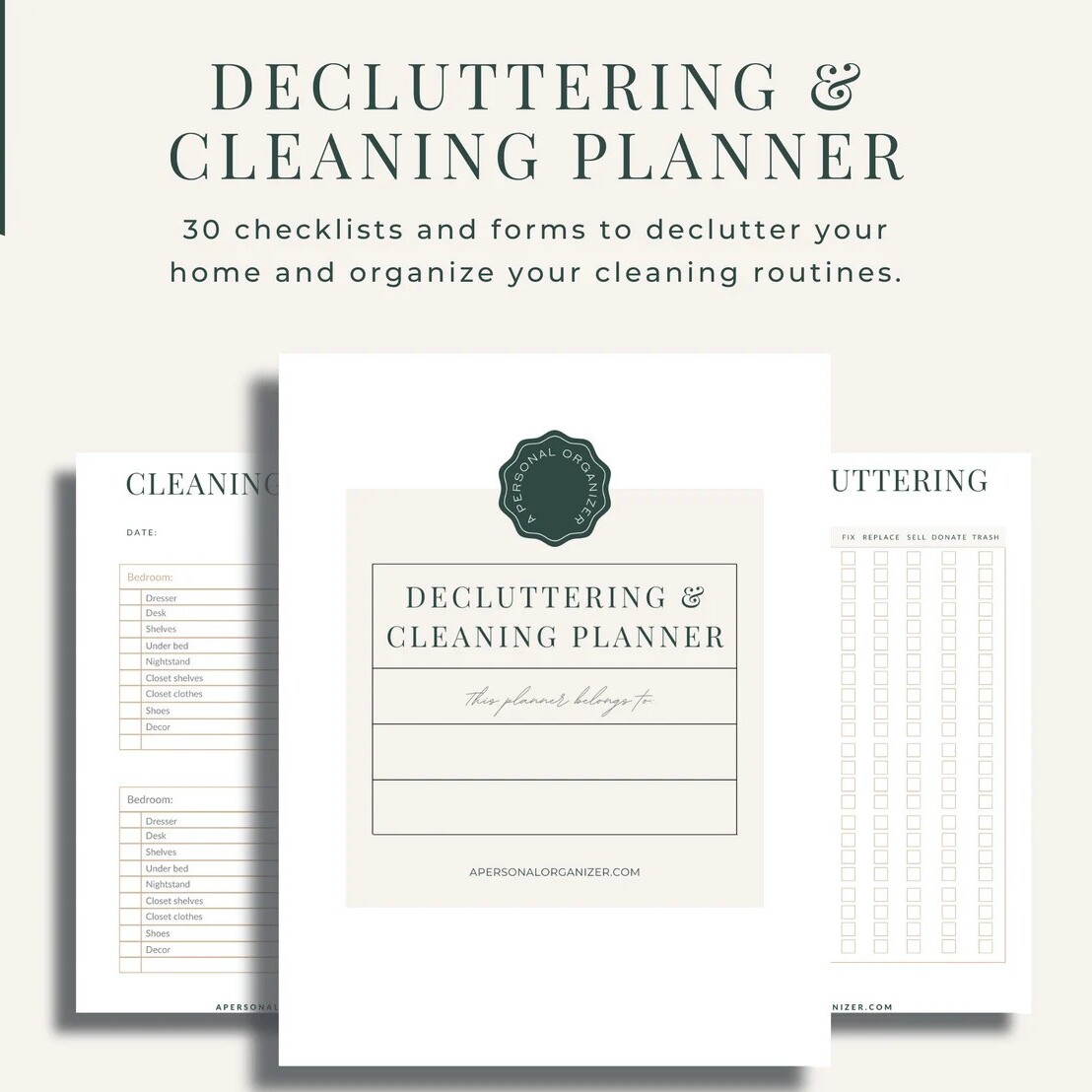‘Permission to Do the Easiest Stuff First’ – I tried Professional Organizer Dana White's No-Mess 5-Day Clutter Shakedown That Banishes Overwhelm
It’s a no-mess method that's great for those who struggle to focus or let go
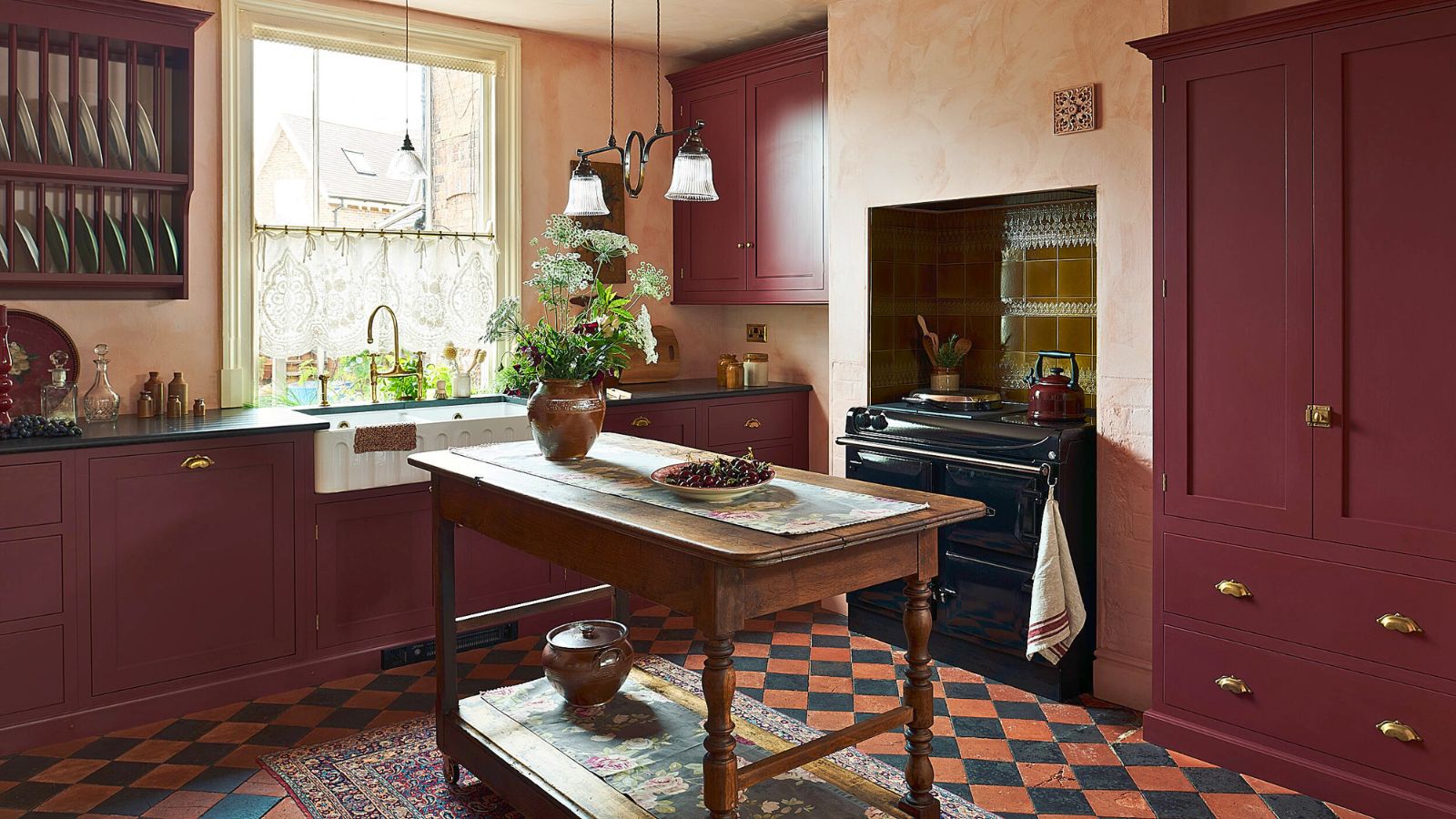

If the thought of opening that cabinet that’s chock full of items (the one you keep burying your head in the sand about) fills you with deep dread, this one is for you.
Decluttering hero and professional organizer Dana White has revealed the simple Five-day Clutter Shakedown her clients love, and the reasons why it works so well to banish anxiety over deciding what to keep and what to say goodbye to.
Here, I spoke to Dana to hear exactly how her decluttering method keeps you on track so you only make progress with your streamlining project, and not piles of stuff that only lead to a bigger mess you’re too tired to clear up. I tried it as well, and it really works.
What is Dana White’s 5-Day Clutter Shakedown?
Professional Organizer Dana White, the creator of the No Mess Decluttering Process and the author of the bestselling book, Decluttering at the Speed of Life, available on Amazon, explains why she created her Shakedown technique, and why it works.
Dana says, ‘Many people think you have to create a mess before decluttering, and things will get worse before they get better. That’s one of the reasons people are put off decluttering, because they dread it.
‘With my 5-Day Clutter Shakedown, you get to eliminate the chaotic middle step of the process where you end up with multiple piles of things. Instead, we declutter item by item, final decision by decision, meaning you only make progress instead of piles.’
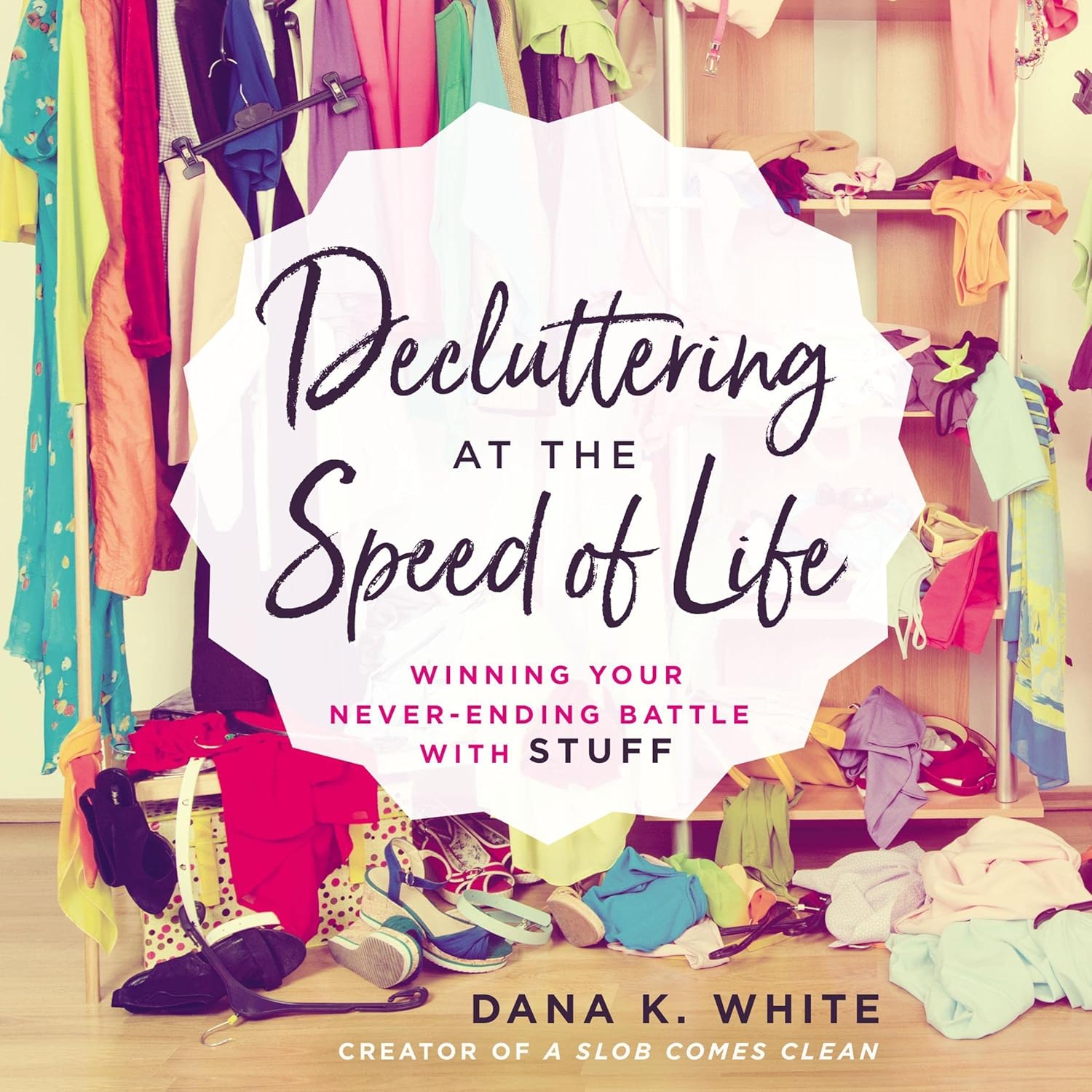
Dana’s book is available in Kindle, Audio, Paperback, and more formats. This Wall Street Journal bestseller tackles the emotional challenges that can get in the way of successful decluttering, with easy-to-follow advice from Dana to conquer them.
Dana notes that traditional decluttering advice often calls for you to take everything out and put back only what should be there. This is referred to sometimes as the Chaos Method.
Design expertise in your inbox – from inspiring decorating ideas and beautiful celebrity homes to practical gardening advice and shopping round-ups.
She turns this concept on its head, explaining, ‘For a lot of people out there, me included, I would pull everything out and think, “Wow, that empty space looks great,” then I’d turn around and look at the mess left spread out behind me and feel immediately overwhelmed and shut down.’
That's where Dana's 5-Day Clutter Shakedown comes into play, bringing immediate results and crucially, no mess.
How to do Dana White’s 5-Day Clutter Shakedown
Despite its name, you don’t have to allocate five days to this. You can stop and start at any point, without any mess left behind. You can also think of them instead as steps, rather than committing to a fixed time frame to complete this decluttering challenge.
Dana says, ‘My process is to go item by item. This means you can work on a space for a short amount of time and make real progress. You don’t have to set aside four hours, a whole day or a weekend to tackle this space. I found that immediately makes me willing to get started in whatever time I have.’
As for who this method is particularly good for, Dana says, ‘It’s for the person who has struggled in the past to declutter, the person who has never felt successful in decluttering, or gets overwhelmed in making decisions.’
I tried it on my messy bedside cabinet drawers and was truthfully gobsmacked that it was decluttered and bare in under three minutes. Usually, I am a bit hesitant to remove things from this space in case I need them overnight, but the Shakedown steps were so easy and impactful. I'm definitely using it moving forward, on spaces big and small.
What You’ll Need for Dana’s 5-Day Clutter Shakedown
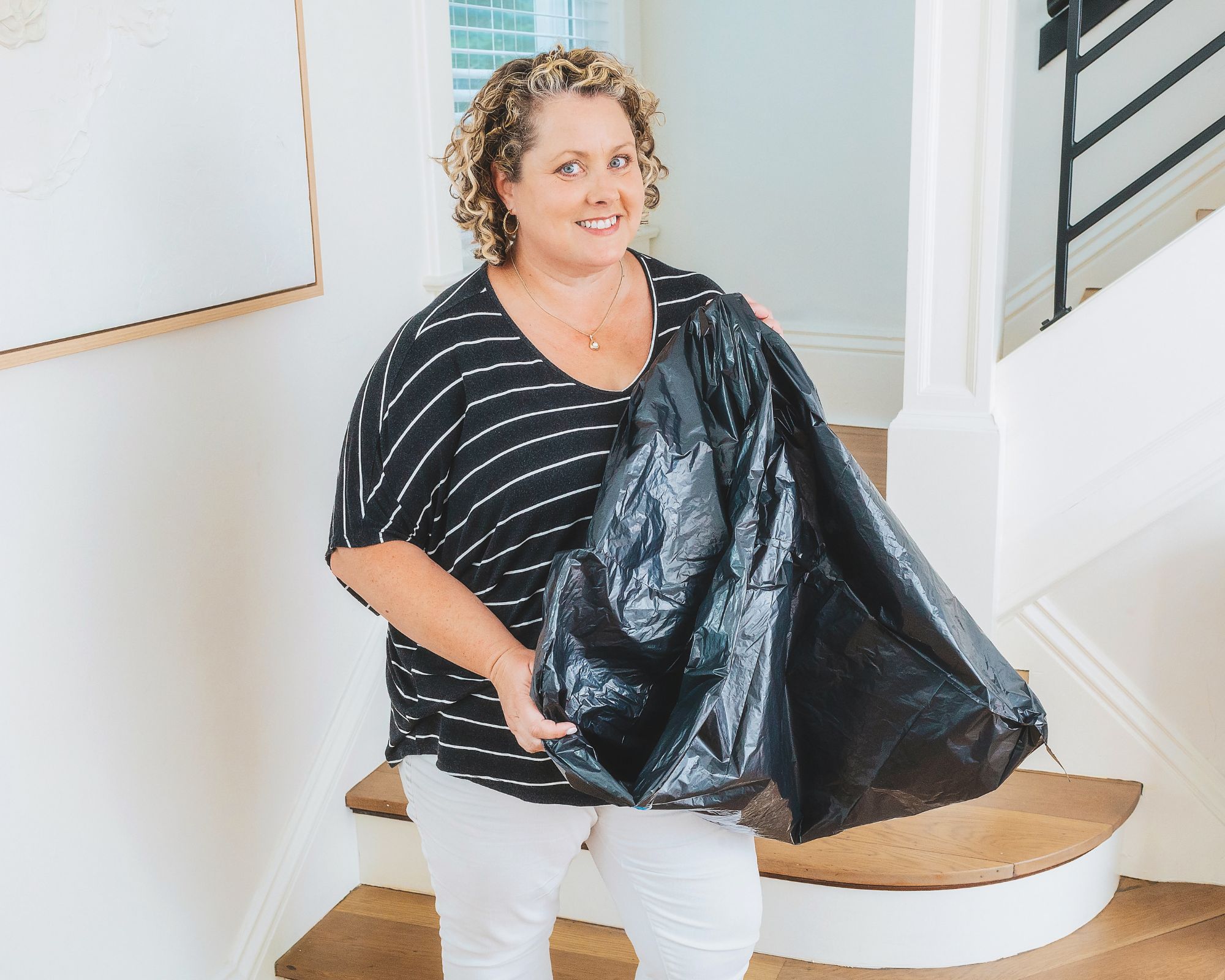
Professional organizer Dana White says all you need for mess-free decluttering is a black trash bag and a donate box.
You don’t need fancy accessories, a set amount of time, or even full determination, as that will build without effort as you quickly hit clearing-out milestones and progress with ease through the steps.
Dana adds, ‘You do need a black trash bag so you won’t see inside it and therefore end up having second thoughts about what’s in there. You’ll also need a recycling bin and a ‘donatable’ donate box, as the box itself is going to leave your house. Everything in these three areas will be the result of a final decision made item by item, and you’re not going back to any of them later.’
We like the Hefty Strong Trashbags available in bulk with fast delivery at Amazon as they won’t tear easily and send your discarded items tumbling out when you’re not expecting it.
If, like me, you have chronic pain, fatigue, or are suffering illness or injury and need to declutter with health challenges in mind, Dana recommends securing what she calls an extra ‘pair of feet’ – someone else to help you take things where they need to go and act as your hands and feet, if needed.
I often do this as my health conditions mean I could easily be injured, so I call on my husband to do the physical work. If you do not need that physical help, but could do with some moral support, try body doubling by downloading Dana’s video course on this method, watching Dana’s free videos available on YouTube, or calling a friend and moving through the steps together while on a video call.
This is a surprisingly effective motivator for household chores you’ve been putting off.
Dana advises that you really embrace progress and only progress. 'This means if you face something you can't emotionally or physically handle, don’t let that stop you,' she says, 'just skip it. Some things will go right next door to where you had it previously. You can make a lot of progress when you just focus on and give yourself permission to do the easiest stuff first.
Day 1: Focus on Trash
First things first, anything that you already know needs to be trashed or recycled can immediately go, but with one caveat. Dana explains, ‘This is not a time to decide if something is trash, it’s just looking at the space you’re decluttering and picking out what you know immediately can be thrown away. That’s the easiest thing to do.
‘Your trash bag and recycling bin are right there. Once you take that thing out of the space and trash or recycle it, it is immediate progress. It takes the pile in front of you from unknown to known.’
Dana advises taking a before-and-after photo for each stage, as it’s seriously motivating to see the overall progress so clearly. ‘Even though you’re not dealing with everything yet,' she says, ‘trashing obvious rubbish means your brain quickly adjusts and the task immediately feels more achievable.’
Only start with trash you can see and access without having to pull things out or move things. You’ll keep finding trash as you go.
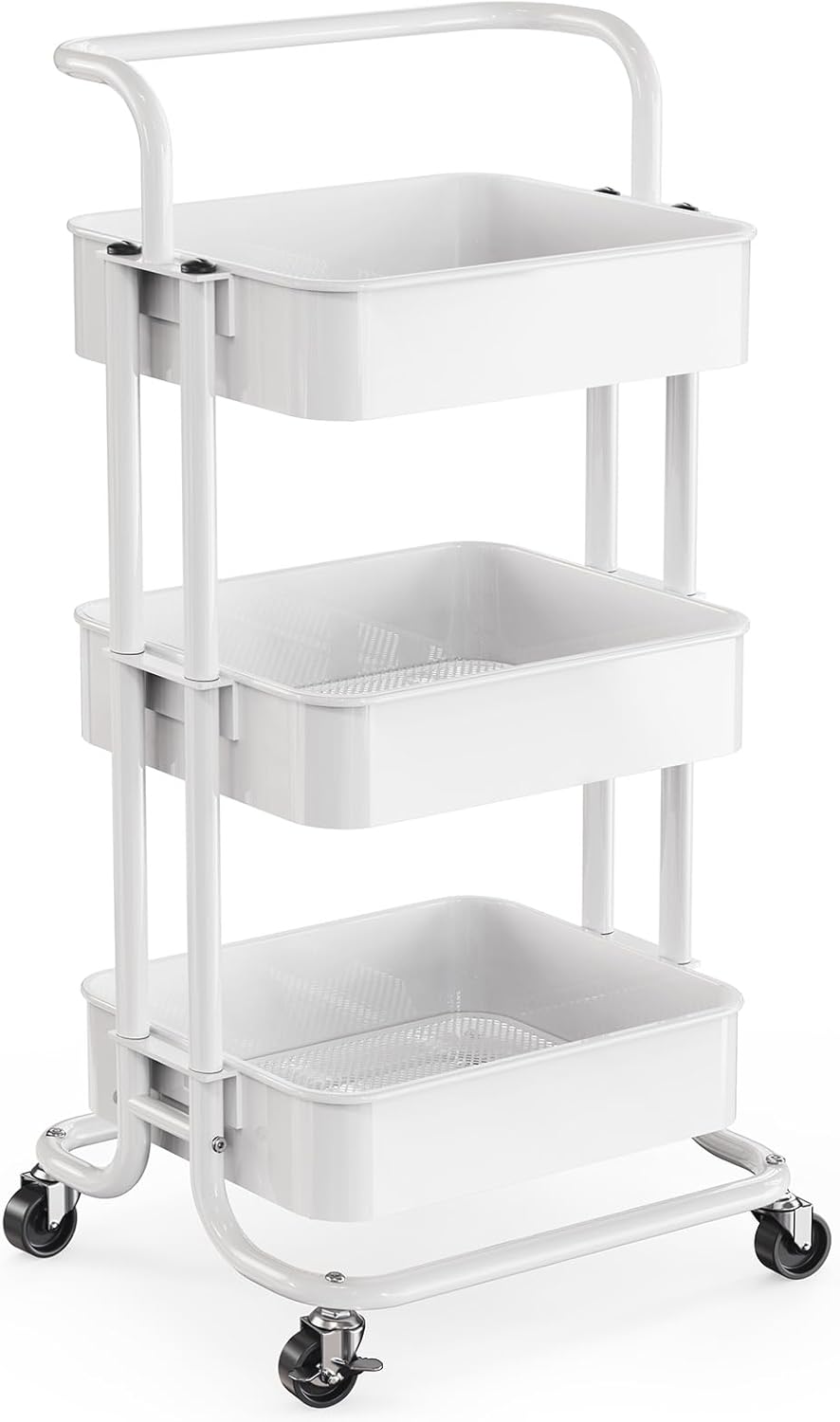
As a person in chronic pain with mobility issues, and weak joints that injure and dislocate daily, I use a trolley to move things around my house during bigger decluttering tasks. Park it in your guest room for instant storage when you're not clearing out your home.
Day 2: Tackle the Easy Stuff
As with the flexibility we’ve touched on briefly with this decluttering method, you can do complete this step, or stop if you want. Either is fine. It’s also really important when you have energy limitations to stick with your adaptive pacing when cleaning or streamlining to avoid a flare.
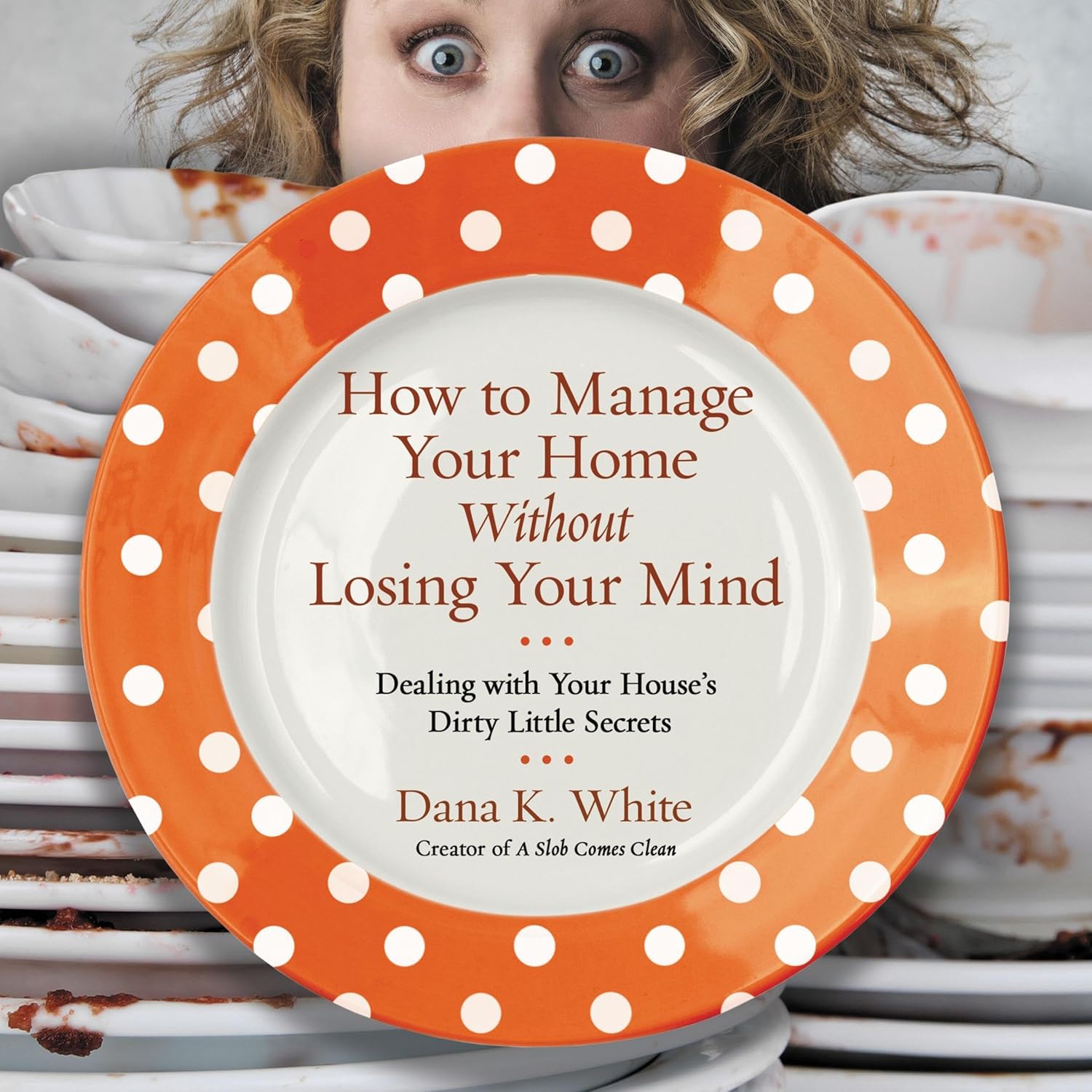
We love Dana’s ‘reality-based’ tips, tricks and organizing techniques to help you get on top of your home’s chores and tasks without ‘emotional drama’, using advise that sticks and decluttering that works.
If you are ready for the second step, simply focuse on anything that is easy. Dana explains, ‘I define “easy” as something that has an already established home elsewhere. Take it there. This is emotionally easy, as you don’t have to make a decision, just take the item back to where it belongs.
‘Every item you remove, when you come back to the space, there is a little bit less in it than before. Because of that, you feel a little bit less overwhelmed, and you’re starting to be able to see what is really in this space. The volume is less than it was before, and you have clarified what you still have to work on.
Day 3: Your Obvious Donations
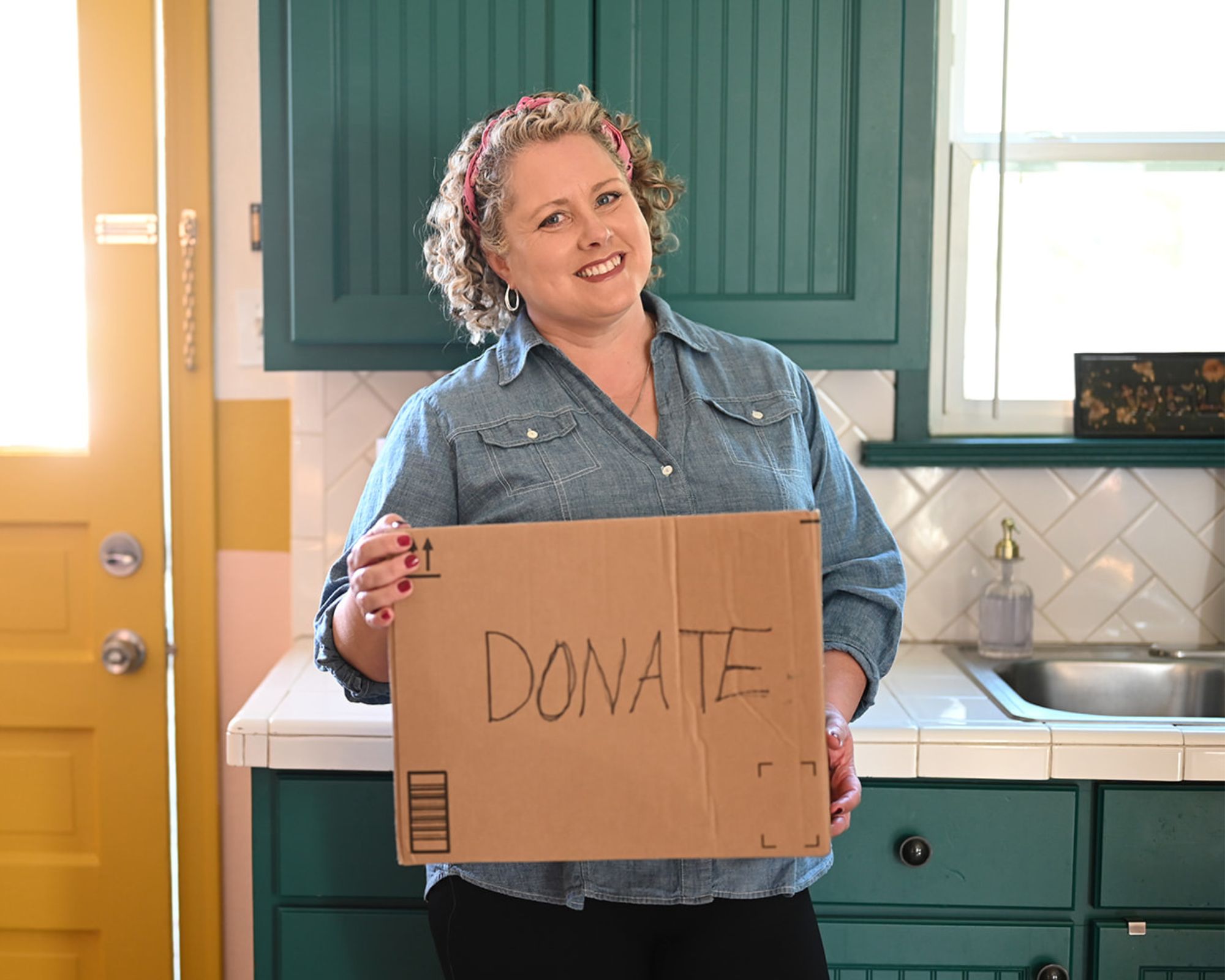
Dana White, pictured holding a donate box.
Next, look for anything you can immediately stick in the donate box without analyzing or making a decision.
‘Give yourself permission to get more out of the space, decision free,’ Dana says. ‘Sometimes people struggle because they don’t know what to donate. If you don’t know, skip it. If it’s stressful for you,, skip it. If you’re struggling to decide if you should donate it, that means it’s not an obvious donation and there is no need to stress if that is the case. If there is nothing obvious, then skip. That’s OK.’
Day 4: Vital Questions
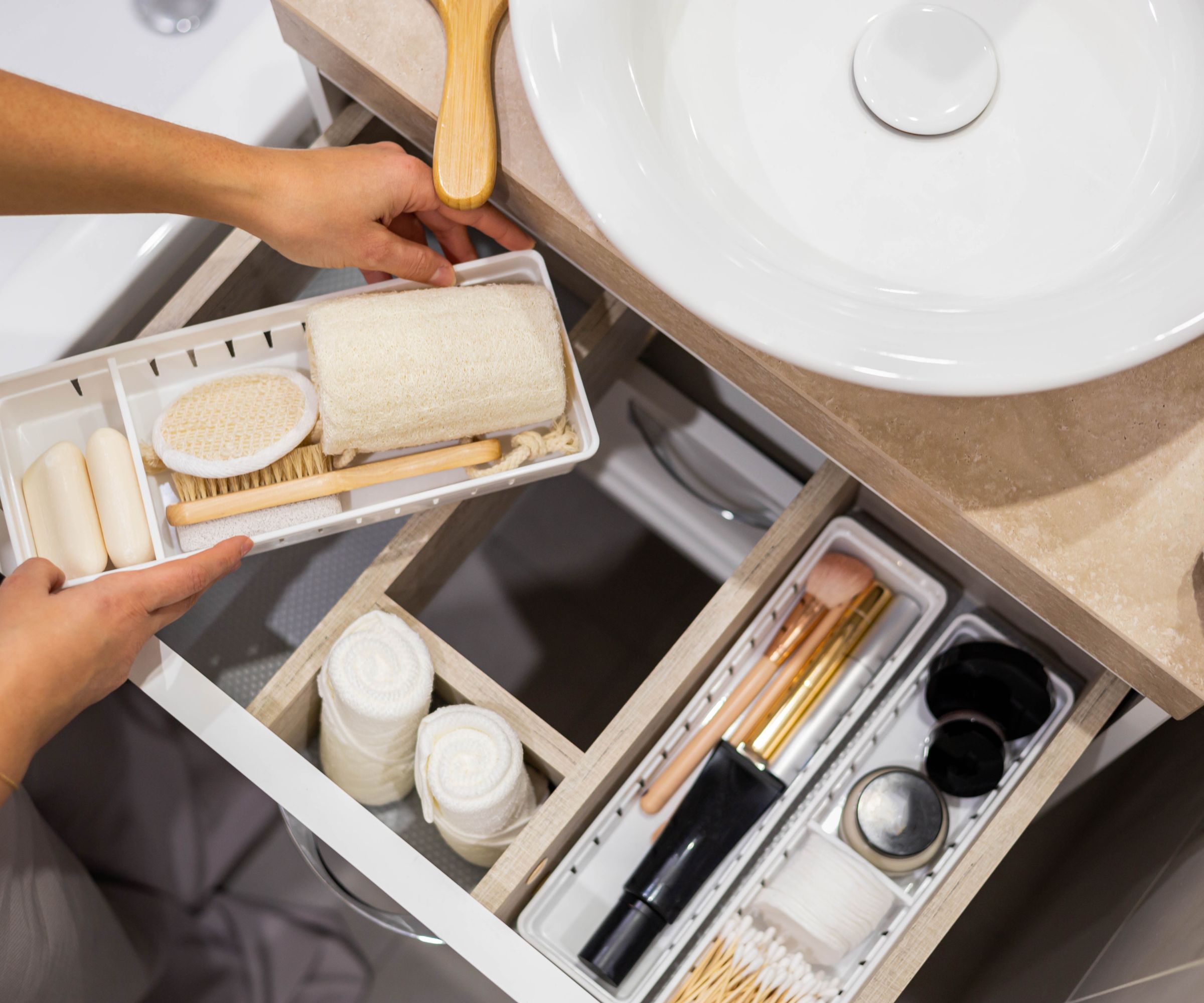
Take your items where they belong immediately.
At this point, the only things left in the space you’ve been diligently clearing out either belong there or are items you don’t know what to do with.
Dana gives a good example. She says, ‘When decluttering your kitchen, it might be that a garlic press has ended up in a junk drawer. Pick up that garlic press and ask yourself, “If I needed a garlic press, where would I look for it first?”’
This is the first of two questions in this step that will help you organize the remaining items. It will also avoid placing things in a spot you later struggle to recall or find when you need them.
Dana adds, ‘If you go with instinct on where that item should live, it is really powerful. Trust your first reaction, even if you think that is a dumb place. If that’s where I immediately think I would look for it first, that’s where it needs to live.’
Now you’ve decided, take the item immediately there. This will avoid a pile of items you later need to put away.
In her own home, Dana says the last thing she wants is to get distracted, tired, and stop mid-method, only to find ‘my space looks worse, as it’s in piles on the bench or the counter.’
By taking each product to take it to the space it should be straight away, you don’t have to go through the thought process to recall what you decided multiple times.
‘That would be the opposite of efficiency,’ Dana points out. ‘What I love about this method is that at any point, if I stop because I have to, my space is only better, and I’ve only made progress.’
The other bonus of this step is that if you take the item to where it should live, and you find costly duplicates, you can immediately whittle them down. ‘If there is no space, ask yourself: What here deserves space less than this item in my hand? That usually makes it pretty obvious.
‘Sometimes what will happen is I will look in a drawer and realize nothing deserves space less. If the garlic press, to stick with our earlier example, is not worthy of the space, then I am willing to get rid of it.’
Day 5: The Container Concept
This final step is about facing the reality of your space. Dana explains how ‘The Container Concept’ was the realisation she had that ‘containers are not for putting things in, they’re meant to contain, to serve as limits. When I was not looking at containers as limits, that’s why my house was out of control.’
If you have more things than space to put them, first, consolidate categories and put like items with like. Dana adds, ‘Sometimes just touching them reveals to you that it’s trash, and putting items together reveals obvious donations.’
Finally, get rid of your least favorite items until what you have left fits functionally in the area you’re been busy paring back.
Dana says, ‘At this point, the only things in that space are things that belong there, and it's functional. By that I mean you should be able to see what you have, access it, and put it back easily. If it’s not functional, blame the reality of the space and get rid of your next least favorite item.’
Meet the Expert
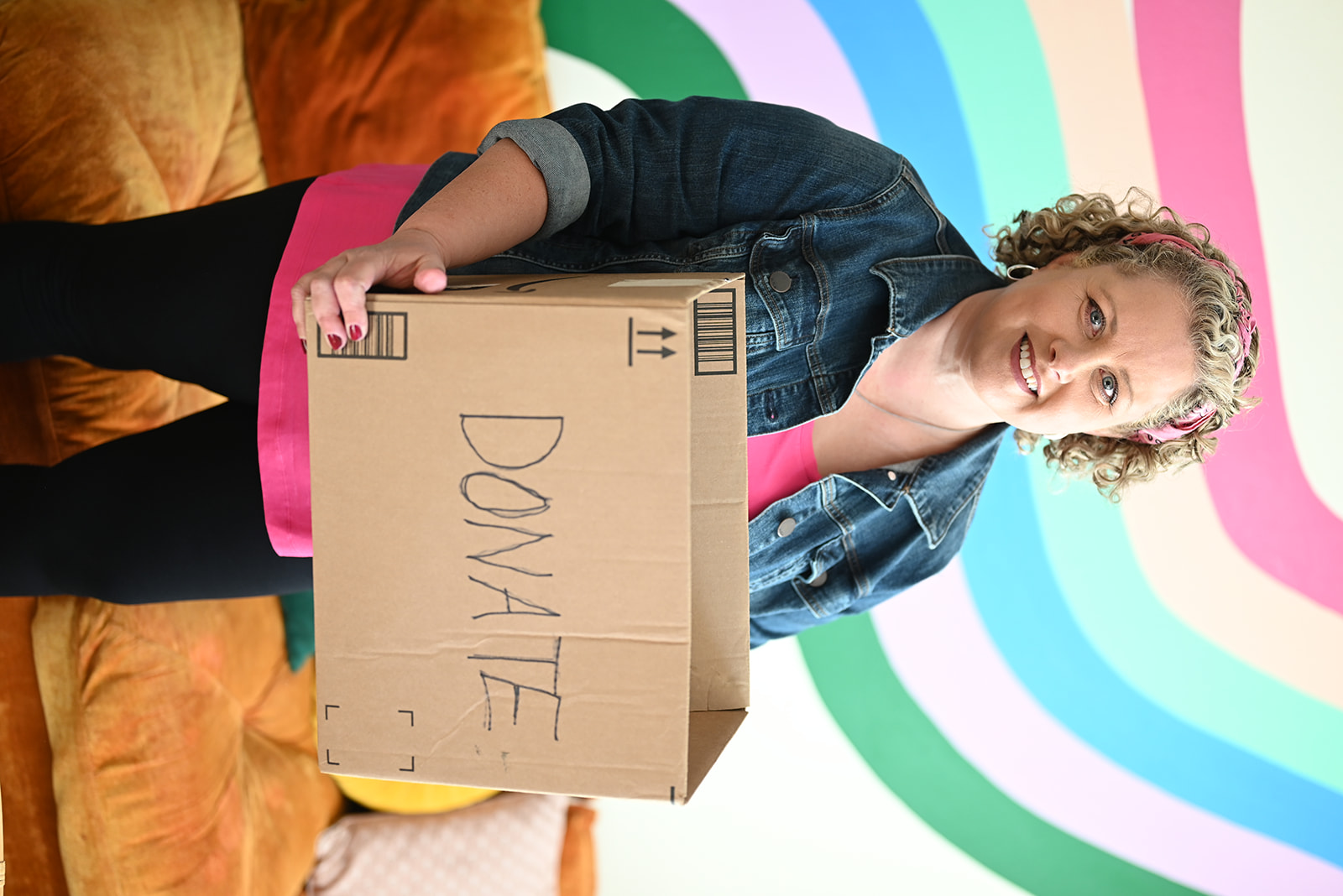
Dana White began blogging about getting her home in order back in 2009 in what she called her 'personal deslobification process'. Her lived expertise grew into the hugely popular No-Mess decluttering phenomenon. In time, Dana wrote a hugely successful book, Decluttering at the Speed of Life (a Wall Street Journal bestseller). She is now also a speaker, podcaster, YouTuber, and trains and certifies Decluttering Coaches in her unique process at DeclutteringCoaches.com.
Professional organizer Dana White’s 5-Day Clutter Shakedown will take you from a cabinet that is shoved full to being completely and totally functional without agonizing decisions you struggle to make or want to avoid.
Next, delve into our library of tried and tested decluttering methods to find more pro tips to try in your next project.
I particularly love the Didn’t Know method and the Sunday Butterfly method, which are both great for neurodivergent minds or if you struggle to make decisions, focus, or let go of items.
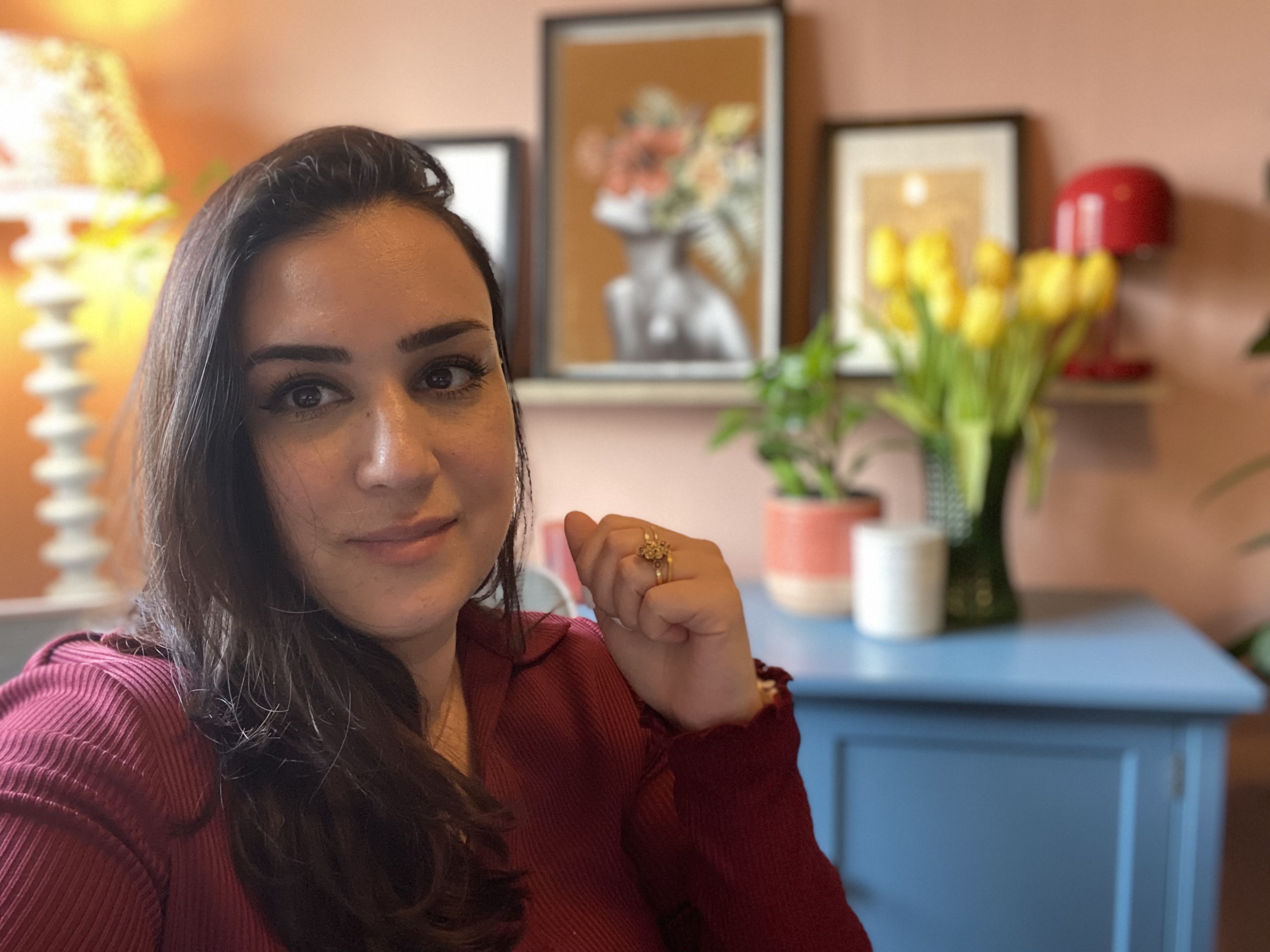
Punteha was editor of Real Homes before joining Homes and Gardens. She has written and edited wellbeing, lifestyle, and consumer pieces for the national press for 17 years, working across print and digital newspapers and magazines. She’s a Sunday Times bestselling ghostwriter, former BBC Good Food columnist and founding editor of independent magazine, lacunavoices.com. Punteha loves keeping her home clean, has tested and reviewed the latest robot vacuums and video doorbells, enjoys cooking, DIY, decluttering and spending weekends improving her newly-built home. Punteha is disabled and in chronic pain, so small, paced projects that bring big impact and make her household run smoothly are her focus.
